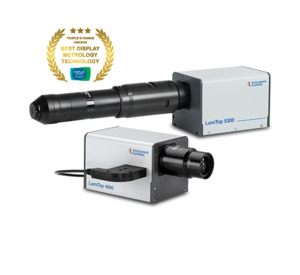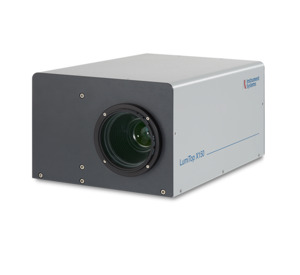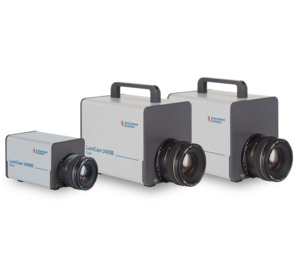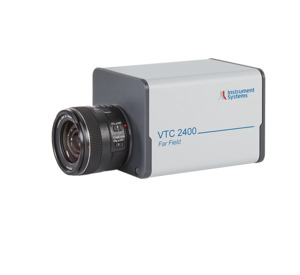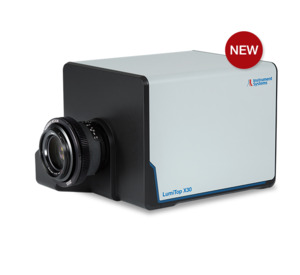VTC 4000 2D near-field analysis of VCSEL arrays
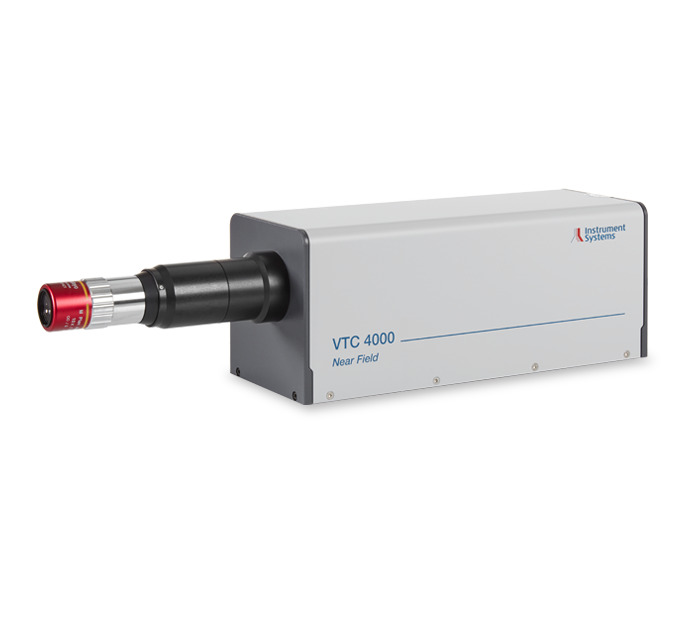

VTC 4000 – Fast testing of VCSEL arrays in the near-field range with the highest degree of accuracy
The VTC 4000 near-field camera from Instrument Systems was specially developed for the ultrafast, precise 2D analysis of VCSEL arrays. It enables polarization-controlled characterization of all relevant parameters simultaneously for the single emitters of the array. Thanks to a unique calibration concept, 2D quality analysis is performed with unprecedented measurement accuracy. Like all measuring instruments from Instrument Systems, the VTC 4000 camera is traceably calibrated to national standards (PTB) and delivers measurements with absolute precision.
The VTC 4000 is available in two versions: VTC 4000 without fiber output, for determining power, polarization and spatial radiation properties of single emitters (VTC4000-100). And VTC 4000 with fiber output, for additional analysis of wavelengths with a spectrometer (VTC4000-200).
Polarization-controlled measurement concept guarantees highest precision
The innovative calibration concept of the VTC 4000 is based on flat-field and polarization correction. Polarization correction takes place in the form of an in-line analysis of the emitted light and corrects the polarization dependence of the optical system. This calibration enables absolute measurement of the power and polarization properties of each single emitter within the camera’s field of vision in a one-shot process.
This unique measurement concept guarantees a minimum error budget in power measurement and results in high measurement accuracy, as currently offered by no other VCSEL measuring system.
Ultrafast quality control of single emitters
Only a single 2D camera image is required for the measurement of power and polarization of several light spots within the camera’s field of view. This can be used to analyze the homogeneity of the array and detect diverging emitters. This ultrafast quality control can also be implemented within a production line.
Spatial radiation properties of single emitters
The spatial radiation properties of single emitters can also be characterized with the aid of a z-positioning unit using the VTC 4000. Capturing several camera images in different z-positions provides a measurement of the emission waist. From this it is possible to calculate the divergence, numerical aperture and der M² value for each emitter.
Determination of wavelength
The VTC 4000 is also available in a version with a fiber output that can be connected to high-resolution spectrometers of our CAS series. This enables the spectral analysis of an emitter in the center of the image. In order to analyze the spectra of all single emitters of an array, the VTC 4000 can be implemented in an xy-positioning unit.
VTC 4000 - Product details:
- Ultrafast 2D characterization of VCSEL arrays in the near field
- Model versions without and with fiber output for the connection of a high-resolution spectrometer from our CAS series
- Simultaneous analysis of single emitters in the camera’s field of view for power, degree/angle of polarization and position
- Individual evaluation of single emitters for divergence, numerical aperture, M² value and spatial radiation properties
- Spectral analysis and determination of wavelength (only with VTC 4000-200)
- High resolution camera with 12 MP resolution
- Calibration possible in range 910 – 980 nm
- Traceable to national standards (PTB) factory calibration for power
- Efficient SDK for simple implementation in dealer systems
VTC 4000 – The perfect solution for near field measurement of VCSEL arrays
The VTC 4000 was specially developed for the near field analysis of VCSEL arrays and provides the optimum measurement solution both in the lab and in the production environment.
Applications include tests for all VCSEL fields of application, in particular 3D sensing for smartphones (e.g. facial and object recognition) and in the automotive industry (e.g. LiDAR systems).
Measurement solutions with the VTC 4000 always deliver fast and accurate results for analysis and quality control at single emitter level.




